8.3 MANAGEMENT PRACTICES FOR PLANTS
Seedlings can be planted into the system as soon as nitrates are detected. Expect these first plants to grow slowly and exhibit some temporary deficiencies because the nutrient supply in the water is temporarily small. It is recommended to wait 3-4 weeks to allow the nutrients to accrue. In general, aquaponic systems show a slightly lower growth rate than soil or hydroponic production in the first six weeks. However, once a sufficient nutrient base has been built within the unit (1-3 months) the plant growth rates become 2-3 times faster than in soil.
8.3.1 Review of planting guidelines Plant selection
It is best to start a new aquaponic system with fast-growing robust plants with a low nutrient demand. Some examples are leafy green vegetables, such as salads, or nitrogen- fixing plants, such as beans or peas. After 2-3 months, the system is ready for larger fruiting vegetables that demand a greater amount of nutrients.
Plant spacing
Seedlings can be planted using a slightly denser spacing than for most vegetables in soil because in aquaponics the plants do not compete for water and nutrients. Even so, the plants still need enough room to reach their mature size and to avoid reciprocal competition for light, which would depress their marketable quality or favour vegetative growth instead of fruits. In addition, consider shading effects of the full-grown plants, which allows for the contemporary cropping of shade-tolerant species next to taller plants.
Supplementing iron
Some new aquaponic units experience iron deficiencies in the first 2-3 months of growing as iron is important during the early stages of plant growth and is not abundant in fish feed. Thus, it may be necessary to initially add chelated iron (soluble iron in powder form) to the unit to meet the requirements for plants. The recommendation is to add 1-2 mg/litre for the first 3 months of starting a unit, and again when iron deficiencies are present. Chelated iron can be bought from agricultural suppliers in powder form. Iron can also be supplemented by using aquaponics-safe organic fertilizers such as compost or seaweed tea, as iron is abundant in both. Section 9.1.1 discusses aquaponics-safe organic fertilizers.
8.3.2 Establishing a plant nursery
Vegetables are the most important output for small-scale aquaponic production. It is essential that only strong healthy seedlings are planted. Moreover, the planting methods applied must avoid transplant shock as much as possible. Thus, the recommendation. is to establish a simple plant nursery to ensure an adequate supply of healthy seedlings ready to be planted into the aquaponic units. It is always best to have an excess of plants ready to go into the system, and often waiting for seedlings is a source of production delay.
A simple nursery bed can be constructed using horizontal wood lengths lined with. polyethylene liner, as shown in Figure 8.2. Water is pumped into the bed for about half an hour each day (controlled by a simple electric timer), allowing water and moisture to soak into the growing media. The water is then slowly drained down into a tank below. This cycle is repeated daily in order to prevent water logging of the seedlings. Too much moisture increases the threat of fungal infections.
Polystyrene propagation trays are placed into the nursery bed and are filled with soil, inert grow media such as rockwool, peat, coco fibre, vermiculite, perlite or at potting mix with a combination of the various types of growing medium. Simpler alternatives for propagation trays are also possible using recyclable materials such as empty egg boxes (Figure 8.3). Choose propagation trays that allow adequate distance between seedlings in order to favour good growth without competition for light. Box 41 lists seven steps for sowing seeds.
FIGURE 8.2
Examples of a plant nursery (a) and lettuce seedlings (b)
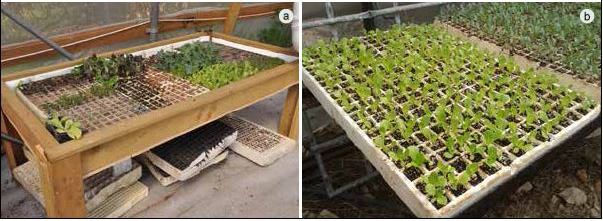
Direct seeding in media beds
It is possible to sow seeds straight into the media bed (Figure 8.4). If using a flood-and- drain mechanism (e.g. bell siphon) the seeds may be washed around. Therefore, the siphon. should be removed while sowing seeds in the bed, and then replaced when the first leaves begin to appear.
8.3.3 Transplanting seedlings
Transplanting seedlings obtained from soil beds is not recommended; it should only be done. if strictly necessary. In this case, all of the soil needs to be washed out from the root system very gently (Figure 8.5) because it may carry plant pathogens. This washing process is very stressful for seedlings and it is possible to lose 4-5 days of growth as the plant adjusts to new conditions. Thus, it is preferable to start seeds. using inert media (rockwool, vermiculite or coco fibre) in propagation trays as explained above. In this way, the seedlings can be transplanted with minimal shock. Larger plants from pots can also be planted, although again the soil needs to be removed. Avoid transplanting in the middle of the day because plant roots are extremely sensitive to direct sun light and leaves can face water stress due to the new growing conditions. It is recommended to plant at dusk
FIGURE 8.3 Using an empty egg tray as a germination tray
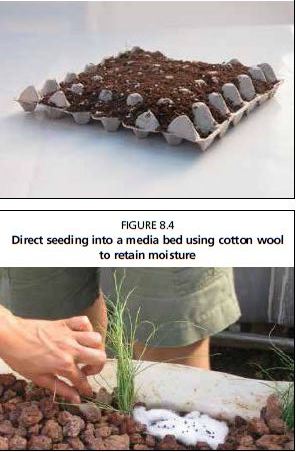
FIGURE 8.4 Direct seeding into a media bed using cotton wool to retain moisture
so the young seedlings have a night to acclimatize to their new environment before the morning sun.
BOX 4
Seven steps to sow seeds using homemade propagation trays
1) Fill an empty egg tray or other seedling tray with growing media such as compost or coco fibre.
2) Sow the seeds in holes about 0.5 cm deep; cover the holes with the remaining media without compacting it.
3) Place the tray in a shaded area and irrigate. Automatic watering systems reduce labour.
4) After germination and sprouting and once the first leaves appear, begin to harden off the seedlings by placing them in increasingly intense sun light for a few hours a day. 5) Fertilize the seedlings once a week with a gentle organic fertilizer high in phosphorous in order to strengthen their roots (optional).
6) Keep growing the seedlings for at least two weeks after first leaf appearance to ensure adequate root growth.
7) Transplant the seedlings into the system when adequate growth is achieved and plants are sufficiently strong Release the seedlings and their soil plugs using a small blunt instrument.
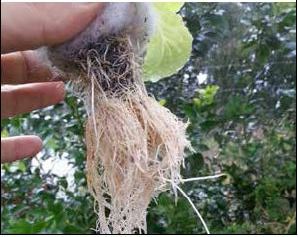
FIGURE 8.5 Lettuce seedling with soil removed from roots prior to transfer into an aquaponic unit
Media bed planting
When planting in volcanic gravel or any other growing media recommended in Chapter 6, simply push aside the gravel and dig a hole that is big enough to contain the plant (Figure 8.6). Plant at the highest point of flooding in the media bed (about 5-7 cm below the surface of the gravel) so the roots are partially submerged in water. Do not plant too deeply, which would allow water to contact the stem or leaves and could lead to disease (collar rot).
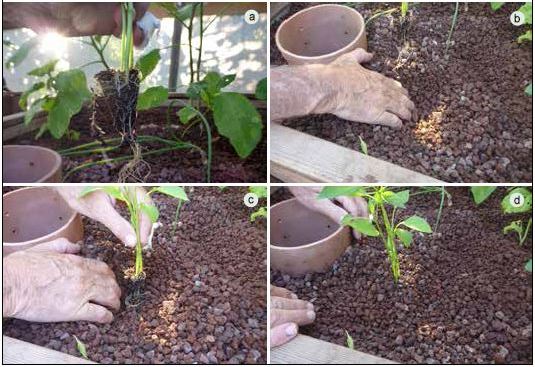
FIGURE 8.6
Step-by-step procedure of transferring a seedling into a media bed unit. Removing the seedling from the nursery tray (a); digging a small hole in the medium (b); planting the seedling (c); and backfilling with medium (d)
NFT planting
To plant in the grow pipes, the seedling needs to be supported with a short pipe or net cup containing 3-4 cm of gravel or other growing media (Figure 8.7). The rest of the net cup should be filled with a mixture of gravel and a moisture-retaining medium such as compost or coco fibre. The medium helps retain moisture because the young plant roots only barely touch the water flow inside the grow pipe. If coco fibre or compost is unavailable, then any standard medium will suffice. After one week, the roots should have extended out through the net up and into the grow pipe with full access to water flowing along the bottom of the pipe. In addition, wicks can be extended from the bottom of the net cup into the stream of water, if necessary.

FIGURE 8.7
Preparing the seedling, growing medium, net cup and extender for an nutrient film technique unit (a); placing the seedling and medium into the net cup (b); and inserting the net cup into the grow tube (c)
DWC planting
Similar to planting in NFT systems, DWC systems need the plant to be supported using a small net cup filled with 3-4 cm of inert medium (Figure 8.8). When the seedling is adequately supported, place it into one of the holes made in the polystyrene sheets to float on top of the water. The bottom of the net cup should just touch the water level.

FIGURE 8.8
Preparing the seedling, growing medium, and net cup for a deep water culture unit (a); placing the seedling and medium into the net cup (b); and inserting the net cup into the floating raft (c)
8.3.4 Harvesting plants
In 1-2 months, leafy green vegetables should be ready to harvest. After three months, the unit should also have enough of a nutrient base to begin planting larger fruiting vegetables. The following points below detail the final guidelines for growing plants after the initial three-month period.
Staggered planting and harvesting
As discussed in Chapter 6, it is worth staggering the planting over time in order to prevent harvesting the entire crop all at once. If this were to happen, nutrient levels would decrease just before harvest, which might create nutritional problems for the plants, and spike after the harvest, which would stress the fish. Moreover, staggered planting allows for continual harvest and transplant of vegetables and ensures constant nutrient uptake and water filtration.
Harvesting approaches
When harvesting full plants from media beds (i.e. lettuce), make sure the entire root system is removed. In addition, shake the gravel stuck in between the roots and place
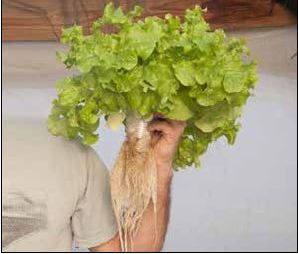
FIGURE 8.9 During harvest the entire plant (including roots) is removed
the gravel back in the media bed. In NFT and DWC pipes/canals also make sure the whole root system is removed (Figure 8.9). Place the discarded plant roots into a compost bin to recycle the plant waste. Leaving roots and leaves in the system can encourage disease. When harvesting vegetables use a sharp clean knife. To prevent any bacteria contamination, ensure that aquaponic water does not wet the leaves. Place harvested plants into a clean bag and wash and chill the crops as soon as possible to maintain freshness.
8.3.5 Managing plants in mature systems
Stabilizing pH
It is vital for good plant growth to maintain the pH between 6 and 7, so plants have access to all
the nutrients available in the water. Add small amounts of base or buffer whenever the pH approaches 6.0 in order to maintain optimum pH levels as described in Section 3.6. Add rainwater or correct with acid any alkalinity-rich water only if the hardness level in the aquaponic system is too high to prevent nitrifying bacteria from naturally lowering the pH to optimal levels. Treat the water with acid outside the aquaponic system, and pour the water into the system after checking the pH.
Organic fertilizers
If deficiencies do occur, it is necessary to add outside nutrients. Organic liquid fertilizer can be used as either diluted foliar feed for plant leaves or poured straight into the root zone. Chapter 9 discuses methods to produce simple home-made fertilizers that are aquaponic-safe. Compost tea and seaweed tea are recommended. Deficiencies are discussed in Section 6.2.3. Deficiencies often occur when there are too many plants for the number of fish, or when feeding is reduced during winter months. Before adding fertilizers, be sure to check pH to make sure there is no nutrient lockout.
Pests and disease
Be sure to try to prevent pests using the IPPM techniques discussed in Section 6.5.. If pests remain a problem, begin by using the mechanical removal techniques before considering sprays. Only use aquaponic-safe remedies, such as: plant extracts or repellents, biological insecticides (Bacillus thuringiensis and Beauveria bassiana), soft soaps, ash, plant oils or extracts of essential oils, chromatic/attractant traps, and external attractant plants treated with insecticides. Regardless, avoid letting the spray enter the water.
Follow seasonal planting advice
To an extent, aquaponic food production methods provide a means to extend planting seasons, particularly if the unit is housed inside a greenhouse. However, it is still strongly recommended to follow local seasonal planting advice. Plants grow better in the season and environmental conditions to which they are adapted.
8.3.6 Plants-summary
Use plants with low nutrient demands for the first few months, i.e. lettuce and beans/peas.
- Plants with high nutrient demands can be planted after the first 3-6 months.
- Use plants recommended for aquaponics, and follow seasonal planting guides for the location.
- Establish a plant nursery to ensure adequate numbers of healthy seedlings.
- Transplant adequately grown and strong seedlings that have a well-developed root system.
- Gently remove excess substrate from the roots before planting into the system. Leave sufficient spacing in between plants according to their size when mature.
- Plan a staggered harvesting system.
- Organic fertilizers may be necessary if deficiencies occur.
• Maintain appropriate water quality, especially a pH of 6-7.